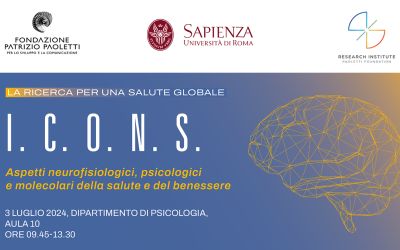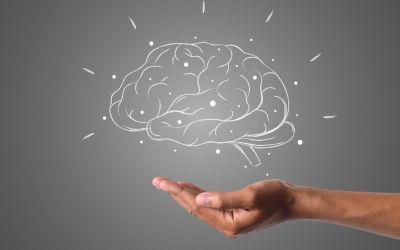
The new technostress and “old” addictions: be educated and educate to manage mental health risks.
Different kinds of addictions are significant mental health risk factors and education can make a big difference in our ability to manage them.
According to the most recent data from the Italian National Institute of Health, Italy presents a rather alarming picture regarding the spread of old and new addictions, especially among the youngest generation. According to a study entitled “Behavioral Addictions in Generation Z” presented by the Italian National Institute of Health (ISS), more than one million and 150,000 adolescents in Italy are at risk of food addictions, almost 500,000 are likely to have a videogame addiction whilst almost 100,000 present traits compatible with the presence of Social Media addiction, and also the phenomenon of social isolation is widespread.
The “old” addictions
Thus, as far as alcohol abuse is concerned, the 2022 data for Italy show that, although there has been a downward trend in consumption in recent years, alcohol remains the substance most used during adolescence, with a peak among 15-year-olds. Under the age of 15, any level of alcohol consumption is considered risky, between the ages of 16 and 18, 1 glass of any alcoholic beverage is the maximum permitted level of alcohol consumption according to the World Health Organization. In addition, a behaviour defined as risky is the habit of concentrating large quantities of alcohol in a limited time, called binge drinking.
With regard to psychotropic substances and narcotics, in 2021, 90.3 per cent of young people had taken only one illegal substance, 6.1 per cent had taken two and 3.6 per cent at least three; 9.7 per cent, or 44,000 students, are referred to as “polyusers” in the research. Frequent users are increasing in number again, after a decline in 2020.
Tobacco use is another well-established addiction among Italian adolescents. From the age of 15, 20% of males and 29% of females report having smoked daily.
“New” addictions: technostress
Technostress refers to a type of negative impact, direct or indirect stress, resulting from the use of technology, which influences attitudes, thoughts and behavior. One of the “new” addictions of this sort with a particularly deep impact on the Z Generation is the so-called social media addiction. Approximately 99,600 students, 2.5% of the participants in the study “Behavioural Addictions in Generation Z” display characteristics compatible with a social media addiction, a percentage that reaches 5.1 per cent amongst female students aged 14-17. The same study states that at-risk students in the 11-13 year old population are 10.1 times more likely to suffer from severe or very severe social anxiety and 5.5 times more likely to exhibit a highly impulsive temperament.
Finally, Internet Gaming Disorder, or the risk of video game use disorder, affects about 480,000 students, 12% of the participants. The percentage is higher among males, with 18% in secondary schools and 13.8% among high school students. With respect to age, the highest risk percentage is found in middle school with 14.3% of children at risk, while the figure drops to 10.2% in high school. Associated factors are moderately severe or severe depression, and severe or very severe social anxiety.
The new free webinar by Fondazione Patrizio Paoletti TECHNOSTRESS. Internet addiction risks and how to manage themwas created to provide all parents, educators and teachers with ideas and practical tools to help them guide their children and students towards a more conscious use of technology and the internet.
Aside from the specific form and the habits associated with the times, be it substances or behavior, neuroscience tells us that our brains interact with different addictions in a very similar way.
What neuroscience teaches us in regards to addictions
From a brain point of view, almost all types of addiction share a common mechanism related to the so-called “reward system“, also known as the “gratification system”. This term refers to a set of brain structures responsible for motivation and learning from experience. The brain structures that constitute the reward system are located within the circuitry that includes the cortex, basal ganglia and thalamus.
The reward system functions as an interface between the intermediate structures of the brainstem and higher areas, with the frontal regions where, depending on the strength of the stimulus received, a certain amount of the hormone dopamine is released. The release of dopamine, also known as the happy hormone, triggers the urgent desire to perceive an additional stimulus. The dopamine system is then continuously activated until the desired effect occurs.
The reward system is, therefore, at the basis of the possibility of motivating behaviour and guiding learning and is therefore indispensable in any educational process, but it is also at the basis of substance addiction, the consumption of which is perceived as reinforcement. A well-oriented education will therefore be one that recognizes the reward mechanism as part of our overall functioning and considers the importance of motivation, but also the need to postpone gratification in order not to become dependent on it.
The ability to postpone gratification in Pedagogy for the Third Millennium is linked to a bi-directional skill of the emotional dimension called “resisting and surrendering”.
“Resisting and surrendering”: a double step to seize the opportunity of discipline
An example that effectively illustrates the education to resist and surrender is that of the famous “Marshmallow Experiment” at Stanford University. The Stanford marshmallow experiment was a study on the ability to postpone gratification conducted by psychologist Walter Mischel in 1972. In the study, children were offered the choice between one small, immediate reward or two small rewards if they waited for a certain amount of time. The researcher then left the child in a room with only one marshmallow for about 15 minutes, then returned to the room. If the child did not eat the marshmallow, the reward would be another marshmallow or a pretzel, the child’s choice. In later years, the researchers found that the children who were able to wait longer tended to have better life outcomes as measured by school aptitude test scores, educational attainment, body mass index and other life measures.
Although the results of the first study have since been diluted by other research, these too have confirmed the finding that self-awareness and self-mastery are predictors of well-being on several levels.
Pedagogy for the Third Millennium specifies that the ability to master oneself is expressed through a two-fold emotional impetus of being able to resist a stimulus while surrendering to a possibility that is felt to be more meaningful.
According to Patrizio Paoletti in Crescere nell’eccellenza (Growing in excellence):
Human beings are truly capable of discipline, they are able to resist, they are able to surrender.
Resisting is that function that allows one not to be engulfed by the chasm of recrimination; one must, in fact, be able to resist one’s fears, negative emotions, and all-out self-judgement, when this does not produce any positive outcome; one must resist those negative tendencies that would like to take over, polluting and destroying the positive vision that humanity has elaborated over time.
Surrendering is the function that enables every person to manifest and achieve their innermost aspirations. It is necessary to surrender to the evidence when it shows the need to ask for help, it is necessary to surrender to the opportunity to be available and cooperative, ready and receptive, vital and engaging to move towards the many desired goals. It is necessary to surrender to the necessity of discipline by understanding that it is a synergetic factor in achieving the quality of life that every individual desires to attain and manifest for themselves.
- Mischel, Walter; Ebbesen, Ebbe B. (1970). “Attention in delay of gratification”. Journal of Personality and Social Psychology. 16 (2): 329–337. doi:10.1037/h0029815
- Paoletti, P. (2008) Crescere nell’eccellenza. Armando Editore.
- https://www.epicentro.iss.it/hbsc/pdf/temi2022/alcol-2022.pdf
- https://www.iss.it/documents/20126/825192/relazione-al-parlamento-2022.pdf/1eab04ab-579c-9584-8dae-799ae419a929?t=1657173847902
- https://www.epicentro.iss.it/hbsc/pdf/temi2022/fumo-2022.pdf
- https://www.iss.it/-/comunicato-stampa-n%C2%B023/2023-dal-cibo-ai-social-quasi-2-milioni-di-adolescenti-della-generazione-z-a-rischio-dipendenze-comportamentali
Be part of the change. Responsibly sharing content is an act of sustainability.
Let's train emotional intelligence: what emotion does this article arouse in you?










